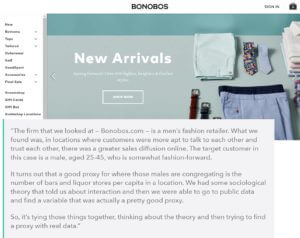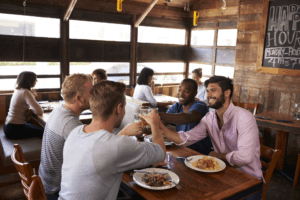“How E-Commerce and Location are More Intertwined Than Ever” is our fifth in a series of blog posts exploring how various industries are taking advantage of big data and analytics. To read more, download our entire eBook, “How Big Data is Changing Industries.”
“What we’re finding is that it’s still about location, but this time it’s about the location of the customer. Where is that customer and with whom does that customer also live? That’s what’s really important in the world of e-commerce.”
– David R. Bell, Professor of Marketing at The Wharton School
One of the main misconceptions about e-commerce is that the online world is somehow disconnected from the offline world. However, a recent study from marketing professor David R. Bell at the Wharton School proves otherwise.
Location, according to Professor Bell’s research, is very important. That’s because the realities of the offline world often determine where a retailer’s online customers come from.
Where E-Commerce and Location meet
Bonobos.com is one example Professor Bell cites in his research as a successful intersection of the online and offline worlds:

Professor Bell found that up to 50% of Bonobos customers came through offline connections. These customers shared information about the store and its offerings in an offline environment.
To get up to 50% of customers essentially for free is a gamechanger—especially in this ultra-competitive retail environment.
Birds of a feather flock together
 Retailers may be selling worldwide, but their customers live, and shop, in specific geographic locations.
Retailers may be selling worldwide, but their customers live, and shop, in specific geographic locations.
Individuals choose where and how to live, and these choices lead to specific neighborhood clusters. The people who make up a neighborhood tend to share demographic characteristics and lifestyles, including preferences for certain types of goods and services. Marketing studies show that people who live in similar neighborhoods have similar buying behaviors, whether they live in NYC or Dallas.
Moreover, people who live in close (physical) proximity to one another not only consume similar products and services, but also share information about the things that they like.
Birds of a feather do indeed flock together. Knowing where your customers live, work, and congregate improves the relevance of your ad copy, images, and messaging. Most noteably, this data can increase the likelihood of coveted, organic word-of-mouth product endorsements.